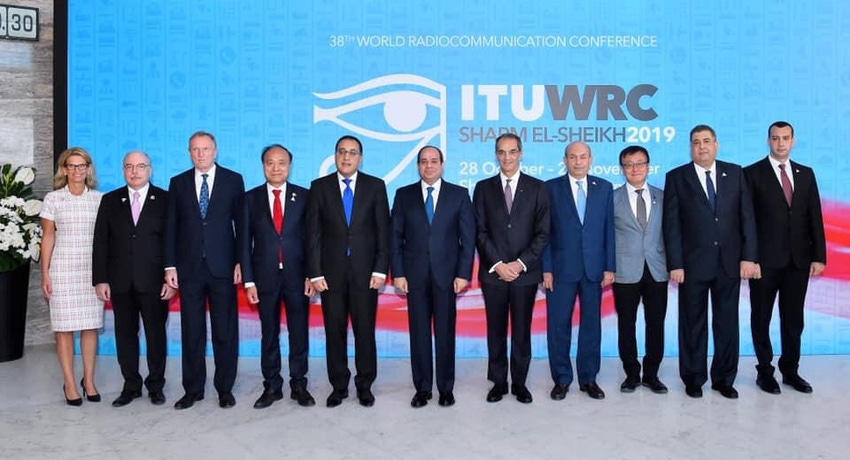IRU WRC-19 earmarks some more high frequency spectrum for 5G
After a month of working on their tans in the Egyptian resort of Sharm El-Sheikh, the global telecoms community has identified a bunch more spectrum it wants to dedicate to 5G.
November 22, 2019

After a month of working on their tans in the Egyptian resort of Sharm El-Sheikh, the global telecoms community has identified a bunch more spectrum it wants to dedicate to 5G.
The latest ITU World Radiocommunication Conference inevitably had 5G as a major theme. The point of the event is to get global consensus on certain telecoms matters and spectrum harmonisation if often high on the list. If different parts of the world use different spectrum for mobile then it makes roaming a massive hassle and drives up the cost of components, so it’s important to get global agreement on this stuff.
So one of the most significant developments was the identification of s bunch more high frequency spectrum that everyone agreed should be set aside for 5G use. Specifically we’re talking about the 24.25-27.5 GHz, 37-43.5 GHz, 45.5-47 GHz, 47.2-48.2 and 66-71 GHz bands.
“The hard won agreements at WRC-19 will favourably impact the lives of billions of people around the world, creating a digital landscape for sustainable growth and development,” said Mr Mario Maniewicz, Director of the ITU Radiocommunication Bureau. “The achievements of WRC-19 in enabling new communication technologies and the protection of existing services will be reflected in the continuous growth of the trillion dollar telecommunication and ICT industry.”
“WRC-19 has brought the mobile industry a step closer to making the full power of 5G something everyone can experience,” said Mats Granryd, Director General, GSMA. “Countries struck the right balance in opening up groundbreaking possibilities for 5G while protecting existing radio services worldwide. The mobile industry’s goal going into WRC-19 was to identify enough 5G spectrum to deliver long-lasting socio-economic benefits. WRC-19 delivered on this goal, and also secured a pathway to 5G’s future success in the agenda for WRC-23.”
“Spectrum regulators have recognized that low, mid and high-band frequencies need to be available and harmonised globally as much as is possible to ensure mobile broadband can meet the expanding services both industry and consumers are expecting in the coming years,” said Joe Barrett, President of GSA. “Today’s decision is a significant and welcome step in ensuring the transformational power of 5G can be fully realised in every market around the world.”
How much use all this very high frequency will be remains to be seen. You have to almost be sat on top of the base station to receive it and the global rollout of the zillions of small cells that would be required to make use of it is not off to a flying start. Still it’s nice to know that when we do eventually find an efficient way to make use of it there will be plenty of spectrum to go round.
About the Author(s)
You May Also Like











_1.jpg?width=300&auto=webp&quality=80&disable=upscale)


.png?width=800&auto=webp&quality=80&disable=upscale)